Watch your nose: Understanding White-Nose Syndrome and the Bats of the North Cascades National Park, part 1
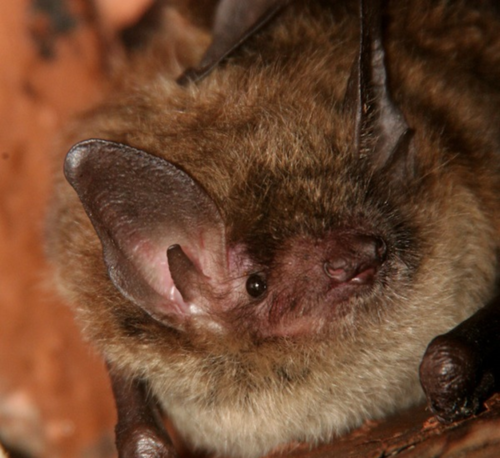
On March 11, hikers found the sick bat about 30 miles east of Seattle near North Bend, and took it to Progressive Animal Welfare Society (PAWS) for care. The bat died two days later, and had visible symptoms of a skin infection common in bats with White Nose Syndrome. -U.S. Fish & Wildlife Service.
This comes across as incredibly serious and dire news for educators, government works, and bat enthusiasts along the west coast. But if you have never heard of white-nose syndrome (WNS), or even knew we had bats in the North Cascades National Park, you might not know how or why this is dire.
What bats live in the National Park?
There are eight species of bats that reside in the park. The first belong to the genus myotis (meaning mouse-eared) and the second three are larger and belong to other genus’s.
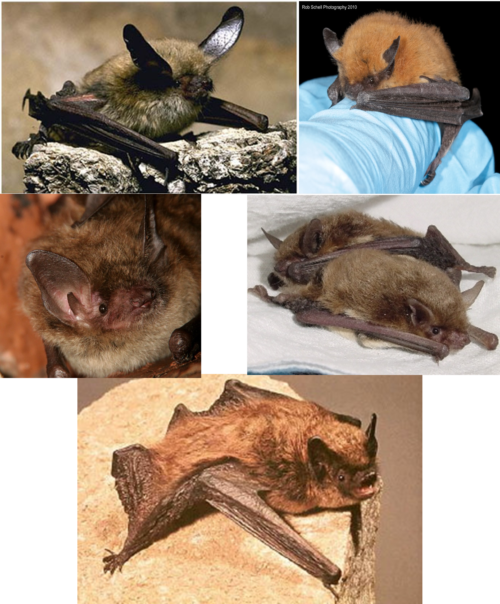
(Clockwise from upper left) Long-eared myotis, California myotis, yuma myotis, long-legged myotis and little brown myotis (photo credits at conclusion of article).
- Long-eared myotis (10-11 in. wingspan) are named after their exceptionally long ears and have great flying maneuverability.
- California myotis are one of the smallest in the park (8-10 in. wingspan) and can only detect insects with echolocation at a very close range.
- Yuma myotis (8-10 in. wingspan) hunt over water and fly in the direction of the current (straight if rivers, circles if lakes).
- Long-legged myotis (8.5-10.5 in. wingspan) are named after their longer hind legs and have been found at elevations up to 3,500 ft.
- Little brown myotis (8-11 in. wingspan) are one of the most common bats across America and are often confused with yuma myotis.
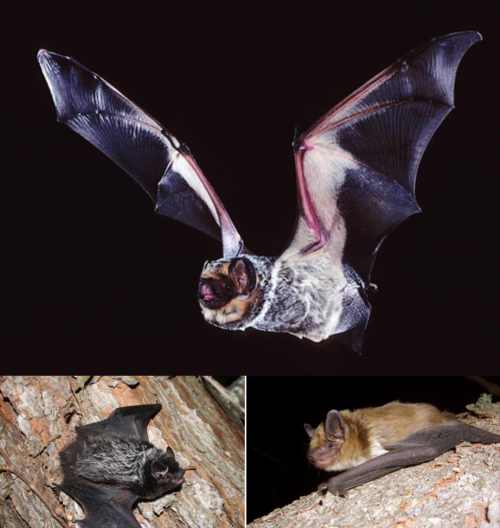
(Clockwise from top) Hoary bat, big brown bat, silver-haired bat (photo credits at conclusion of article)
- Hoary bats are the largest in the park (13-16 in. wingspan) and are named after their hoary, or frosty, coloring.
- Big brown bats (8-15 in. wingspan) are habitat generalists and can have maternity roosts from a few dozen to several hundred.
- Silver-haired bats (7-14 in. wingspan), along with hoary bats, have the longest migratory paths of species in the park.
How do bats live in the park?
Being found throughout the world except Antarctica, bats (order Chiroptera) have the second most number of mammal species known, after rodents of course. While other mammalian species have been shown to glide (such as the flying squirrel), bats are the only mammal that has the capacity to truly fly. Bats are generally divided into two families: the large fruit eating “flying foxes” and the smaller echolocating insectivores. Some species from each group also eat nectar which helps to pollinate the local ecosystems. However, none of the bats located in the park have been found to eat nectar in any way and are echolocating insectivores.
The life cycle of a bat starts in early winter when most mating is done. Females delay fertilization throughout hibernation, and begin gestation in spring. For the smaller bats in the park gestation lasts for 40-60 days while the larger hoary bats take 90 days on average. Litters consist of one pup, and on rare occasion have twins. Hoary and silver-haired bats, however, usually have two and have been documented on having up to four! First flight for the little pups take between 2.5 and 4 weeks, and start hunting after one to two months. Some bats can bred in their first year, with lifespans ranging anywhere from 15 through 30 years! They then start the cycle all over again in early winter.
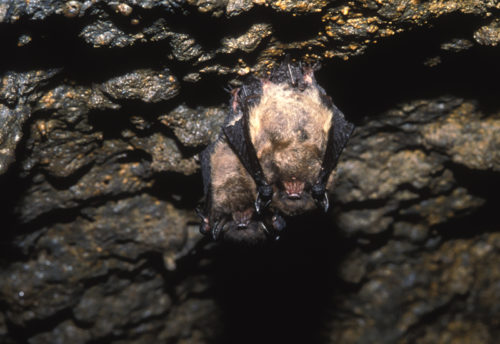
Little brown myotis roosting. Photo retrieved from nhptv.org.
To prepare for their winter hibernation, the bat species in the park eat at least half their weight of insects each night. Foraging begins from just before sunset and into the night. Most species hunt for a few hours, rest for an hour or two, and then hunt again. These sessions continue until just before sunrise. To capture these insects, bats use echolocation. While bats are not blind, echolocation increases their success rate immensely during their peak hunting times. To get an understanding on how this works, imagine yourself in your own home. Light is traveling from the ceiling, hitting objects, and then traveling into your eye. Your brain then calculates where and what is around based on those light patterns. Instead of using light, bats use sound. They emit this sound constantly, hitting all that is in front of the bat. When the sound bounces back, the brain of the bat calculates what is it and how far away it is. They also use echolocation to avoid predators when possible, such as owls and hawks.
During this summer hunting time, bats roost either alone or by sex (depending on the species) during the day to rest. Some roosting spots include caves, buildings, rock crevices, and beneath loose bark in trees or even on branches. During the night foraging bats find a roosting location that is close to their preferred hunting habitat. When bats hibernate they use hibernacula, or winter roosts. Usually more sheltered than their summer counterparts, these roosts need to insulate heat and protect the individuals against predators. In the Pacific Northwest, most species do not hibernate in large groups except for the little brown and big brown bats. While they share flight with birds, most bats do not migrate more than a dozen or so miles from their summer hunting grounds with the exception being again hoary and silver-haired bats which migrate all the way down to Mexico for the winter.
Why are bats important for the park?
Each species plays an important role in the overall ecology of the park. While the whole ecosystem of the park would not cease to function, any small change in the whole system can have unseen consequences for years to come. The roles of these species in this park can be surmised as insect control, nutrient distribution, and a bioindicator of ecosystem health.
All of the bats in the park are insectivores, consuming a large number of insects. For example, the little brown bat weighs only 7.9 grams but needs to consume 9.9 grams of insects each night! It is eating more than it’s body weight each day to recuperate from the winter and store fat for next hibernation. Without these two species, there would be an increase of insect activity, which in turn could harm local vegetation and pester natural fauna. An estimated 99% of potential crop pests are controlled in part due to bat activity.
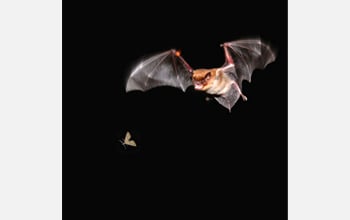
Photo taken by Jessica Nelson. Retrieved from nsf.gov.
After all of that insect mass is digested, bats spread the nutrients around the ecosystem through guano. Because bats transfer roosting spots often during spring, summer, and fall, their guano is spread evenly throughout their range providing nutrient cycling. This fresh fertilizer helps producers, like trees and ferns, as well as providing nutrients for decomposers, like fungi, bacteria, and arthropods.
A biodindicator is a litmus test for the ecosystem. If the overall system is healthy enough for bats, for example, then we know it is healthy enough for the insects that are consumed. Bats are sensitive to stressors, like climate change, and their absence could predict things like pollution or water acidification. With bats dying to WNS, the park has one less “litmus test” to see how climate change is impacting the overall system.
Stay tuned for part two later this week, where I cover what is white-nose syndrome and what is being done about it.
Photos courtesy of:
- Long-eared myotis, retrieved from scbats.org
- California myotis, taken by Rob Schell. Retrieved from fieldherpforum.com
- Yuma myotis, taken by Dick Williams. Retrieved from batrescue.org
- Long-legged myotis, retrieved from falconservices.com
- Little brown myotis, retrieved from batworlds.com
- Hoary bat, taken by Merlin Tuttle. Retrieved from batsaboutourtown.com
- Big brown bat, taken by Liam McGuire. Retrieved from lpzoo.com
- Silver-haired bat, retrieved from nature.org

